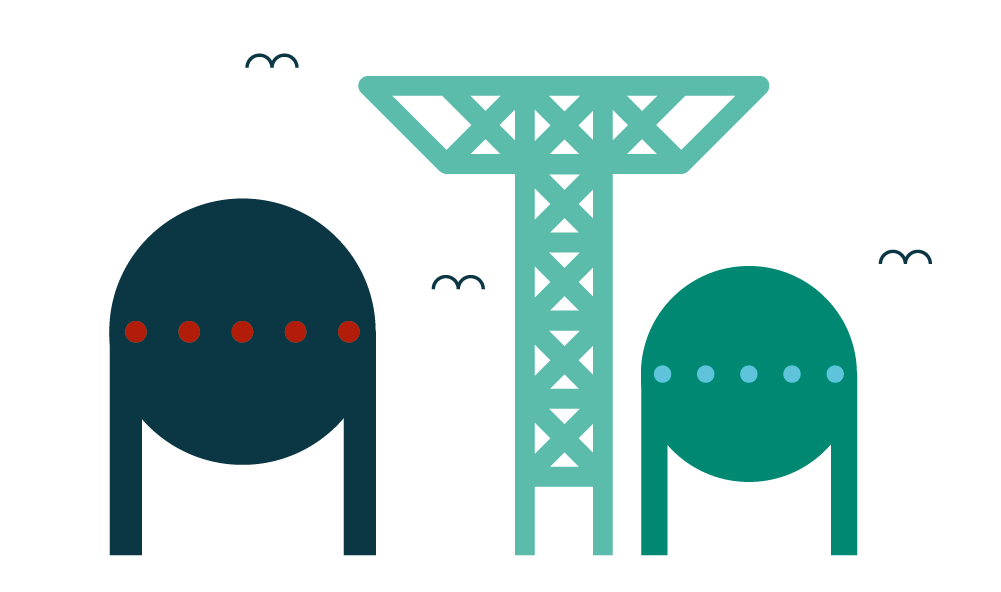The CNMC resolves doubts about the connection of renewable hydrogen projects to the gas grid by means of blending and highlights the existing gaps in the access regulations
Published on 7th November 2023
The resolution of the grid connection conflict clarifies issues relating to the issuing of the binding report, the content of the CTEs and the lack of preference in capacity allocation

On 28 September 2023, the CNMC approved the Resolution of the grid connection conflict to the natural gas transmission grid raised by BDP H2 GREEN XXI, S.L. ("BDP") against ENAGAS GTS, S.A.U. ("ENAGAS GTS") and ENAGAS TRANSPORTE, S.A.U. ("ENAGAS TRANSPORTE") in relation to the requests for connection to the basic natural gas grid by direct line (blending) of twenty-seven renewable hydrogen production installations (the "Resolution"), the subject matter of which is as follows:
(i) Whether it is necessary for ENAGAS GTS to issue a binding report as a previous requirement for ENAGAS TRANSPORTE to assess the connection of the projects.
(ii) Whether the communications on connection requests issued by ENAGAS TRANSPORTE comply with the regulations in force, especially in relation to the CTEs (Technical-Economic Conditions) issued.
(iii) Whether the right to connect to the gas grid for hydrogen injection by means of blending grants a preferential right to capacity over other applications submitted at a later stage.
The following are the CNMC's answers to these questions:
Needlessness of the binding report of ENAGAS GTS in the framework of the procedure for access and connection of a hydrogen project to the gas grid.
In relation to the first issue addressed in the grid connection conflict, the CNMC understands that although it is true that art. 78.5 of Law 34/1998, of 7 October, on the hydrocarbons sector ("Hydrocarbons Law") establishes the need for the Technical System Operator to issue a binding report on the connection of direct hydrogen injection lines to the natural gas grid, this article regulates aspects of the administrative processing of direct lines, therefore, it should not be understood that its issuance is required in the access and connection procedure, but rather in the framework of the processing of sectorial authorisations established, at the state level, in Title IV of Royal Decree 1434/2002, of 27 December.
It therefore concludes that the issuing of a binding report by ENAGAS GTS is not necessary, in accordance with the aforementioned article 78.5 of the Hydrocarbons Law, for the assessment of the request for connection of a hydrogen project to the gas grid through a direct line.
ENAGAS TRANSPORTE's replies to the connection requests of the twenty-seven hydrogen projects, as well as the content of the CTEs issued, do not comply with current legislation.
ENAGAS TRANSPORTE alleges as the only reason for the suspension of the procedure for the connection of the BDP projects to the gas grid, the non-issuance to date of the binding report by ENAGAS GTS.
In this respect, as indicated by the CNMC in the first of the questions analysed, given that this report is not necessary in the context of the analysis of the connection of the projects, but must be issued as part of the administrative procedure, there is no reason to refuse the right to connect the projects.
With regard to the content of the CTEs issued by ENAGAS TRANSPORTE, the CNMC states that they do not meet the necessary conditions to be considered firm connection proposals that could be accepted by the project developer, as their content and detail are manifestly insufficient to be analysed by BDP.
The CNMC also says that ENAGAS TRANSPORTE cannot justify the imprecision and vagueness of its connection proposal in the lack of development of the access capacity allocation procedure, since the recognition of the connection right only implies the right to connect the hydrogen production project to the natural gas grid, and does not imply, therefore, the recognition of a future right to discharge the hydrogen produced into the gas grid, which would be the object of the subsequent access procedure.
Lack of provision in the regulations for priority criteria for the allocation of access capacity.
The CNMC stresses in its Resolution that the right of connection should not be confused with the right of access and that, therefore, the right of connection does not entail an analysis of the future capacity of the project. In this regard, it is highlighted that the current regulation of the right of access does not establish time priority criteria in relation to the allocation of capacity based on the chronological order of connection requests, nor does it regulate access to the natural gas grid for hydrogen projects.
Therefore, once the connection right has been obtained, if BDP accepts ENAGAS TRANSPORTE's CTEs, it shall be subject to what the access regulation determines in order to obtain the right to discharge the hydrogen produced into the gas grid.
If you would like to know more about new or pending regulatory, energy or environmental legislation and its possible implications, please do not hesitate to contact one of our experts listed below or your usual contact at Osborne Clarke.





